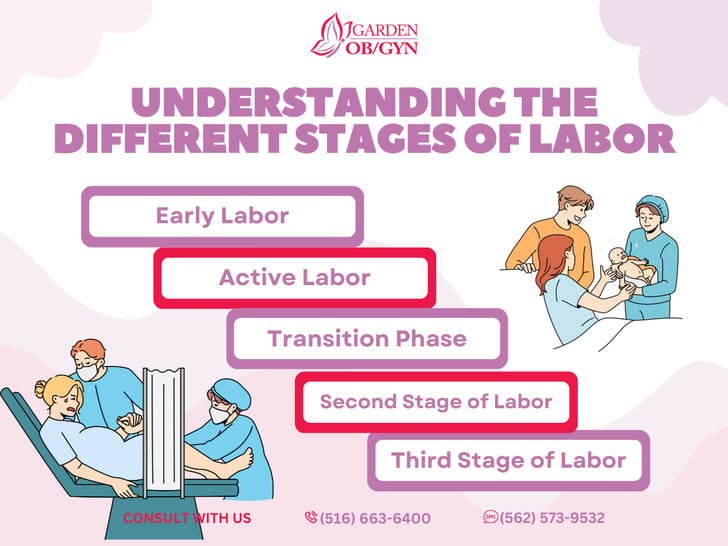Understanding the Different Stages of Labor
Childbirth is a transformative journey with distinct stages. Understanding them empowers expectant parents to prepare for labor and make informed birth plans. From contractions to holding your newborn, we'll explore it all.

Childbirth is a remarkable and transformative experience, but it can also be a daunting one, especially for expectant mothers and their partners who may not fully understand what to expect during labor. Labor is typically divided into several stages, each with its own unique characteristics and challenges. By understanding these stages, you can better prepare for the journey ahead and make informed decisions about your birth plan. In this article, we will explore the different stages of labor, from the initial contractions to the moment you hold your newborn in your arms.
Stage 1: Early Labor
Early labor marks the onset of the birthing process. Contractions begin, but they are usually mild and irregular, often lasting around 30 seconds with 5-30 minutes of rest in between. This stage can last for hours, and it's crucial for expectant parents to remain calm and conserve energy during this time. It's advisable to stay hydrated, eat light snacks, and try to rest or engage in soothing activities like walking, taking a warm bath, or practicing deep breathing exercises. Early labor allows the cervix to efface (thin out) and dilate (open up) to approximately 3-4 centimeters.
Stage 2: Active Labor
Active labor is the phase where things start to intensify. Contractions become stronger, more regular, and closer together, typically lasting 45-60 seconds with 3-5 minutes of rest in between. At this stage, the cervix continues to dilate from 4 to 7 centimeters. The pain and discomfort increase, and many women find it helpful to focus on breathing techniques, movement, or pain relief methods like epidurals or natural pain management techniques. Your healthcare provider will monitor your progress closely and offer guidance as needed.
Stage 3: Transition Phase
Transition is often considered the most challenging phase of labor, both physically and emotionally. Contractions are intense, lasting around 60-90 seconds and occurring every 2-3 minutes. This is when the cervix fully dilates to 10 centimeters, and the baby begins to descend into the birth canal. Many women experience a mixture of emotions, including exhaustion and anxiety. It's essential to have a strong support system at this stage, with your birthing partner or healthcare provider offering reassurance and encouragement. Stay focused on your goal of meeting your baby soon.
Stage 4: Second Stage of Labor
The second stage of labor is the final push towards childbirth. Contractions continue, but the urge to push becomes stronger. This stage can last anywhere from a few minutes to a couple of hours. It's essential to work closely with your healthcare team to effectively push during contractions while conserving your energy in between. During this stage, you may experience a "ring of fire" sensation as your baby's head crowns. With determination and the guidance of your healthcare provider, you will eventually give birth to your baby.
Stage 5: Third Stage of Labor
The third stage of labor involves delivering the placenta. After your baby is born, contractions will continue, and you will feel the urge to push again. However, these contractions are usually much milder than those in the previous stages. The placenta detaches from the uterine wall and is expelled from the body. This stage typically lasts between 5 to 30 minutes. Once the placenta is delivered, your healthcare provider will check for any remaining tissue and ensure that you are stable.
Understanding the different stages of labor is crucial for expectant parents, as it allows you to prepare mentally and emotionally for the challenges and joys that lie ahead. Each stage serves a vital purpose in the birthing process, bringing you closer to the moment when you will hold your precious newborn in your arms. Remember that every labor experience is unique, and having a supportive healthcare team and birthing partner by your side can make all the difference in ensuring a safe and positive birth experience. Embrace the journey, trust your instincts, and look forward to the beautiful moment when you welcome your new baby into the world.
































